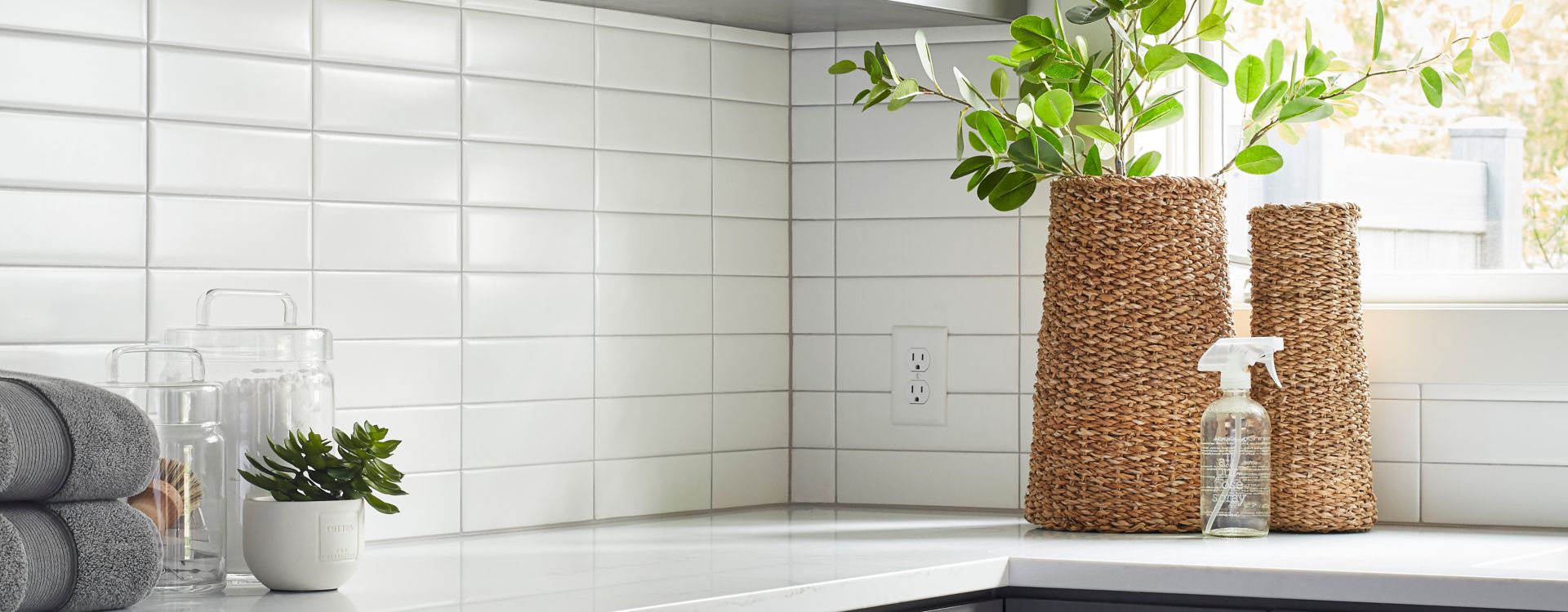How to Install a Kitchen Tile Backsplash
Installing your own tile backsplash is an approachable and satisfying DIY renovation project. With a little bit of patience and determination, you can totally transform your kitchen.
In this article, we will show you how to install kitchen backsplash tile, step by step.
Tools You'll Need
- Pry bar or hammer
- Screw driver
- Finishing nails
- Tile cutter
- Notched trowel
- Margin trowel
- Mixing bar
- Buckets (3)
- Grout float
- Caulk gun
- Sponge
- Dry cloth
- Safety goggles
01
Prepare the Area
Remove any countertop items and place them safely away from the work area. Appliances such as an oven or refrigerator may also need to be moved to make tiling behind them easier. Cover the countertops and any adjacent areas with a protective sheet, such as a drop cloth or plastic sheeting, to prevent damage from debris or spills. Remove any countertop items and place them safely away from the work area. Appliances such as an oven or refrigerator may also need to be moved to make tiling behind them easier. Cover the countertops and any adjacent areas with a protective sheet, such as a drop cloth or plastic sheeting, to prevent damage from debris or spills.
You will also need to remove any outlet covers and switch plates in the area where the backsplash will be installed. This helps prevent damage to these items and makes the tiling process around electrical outlets easier and more precise.
02
Prepare the Wall
If you're replacing an existing backsplash, carefully remove it using a pry bar and hammer. Patch any holes or cracks in the wall with spackle and sand smooth. For uneven surfaces, consider using joint compound to create a level base for the new tiles.
Next, thoroughly clean the surface where the backsplash will be installed. Any grease, dust, other or residues should be removed so the adhesive can properly bond to the wall.
If your tile backsplash is being installed over a particularly uneven surface or somewhere with a lot of moisture, such as a bathroom, consider installing a backer board. This thin backing creates a smooth, even surface for the tile to adhere to and protects the wall from moisture.
03
Install a Ledger Board
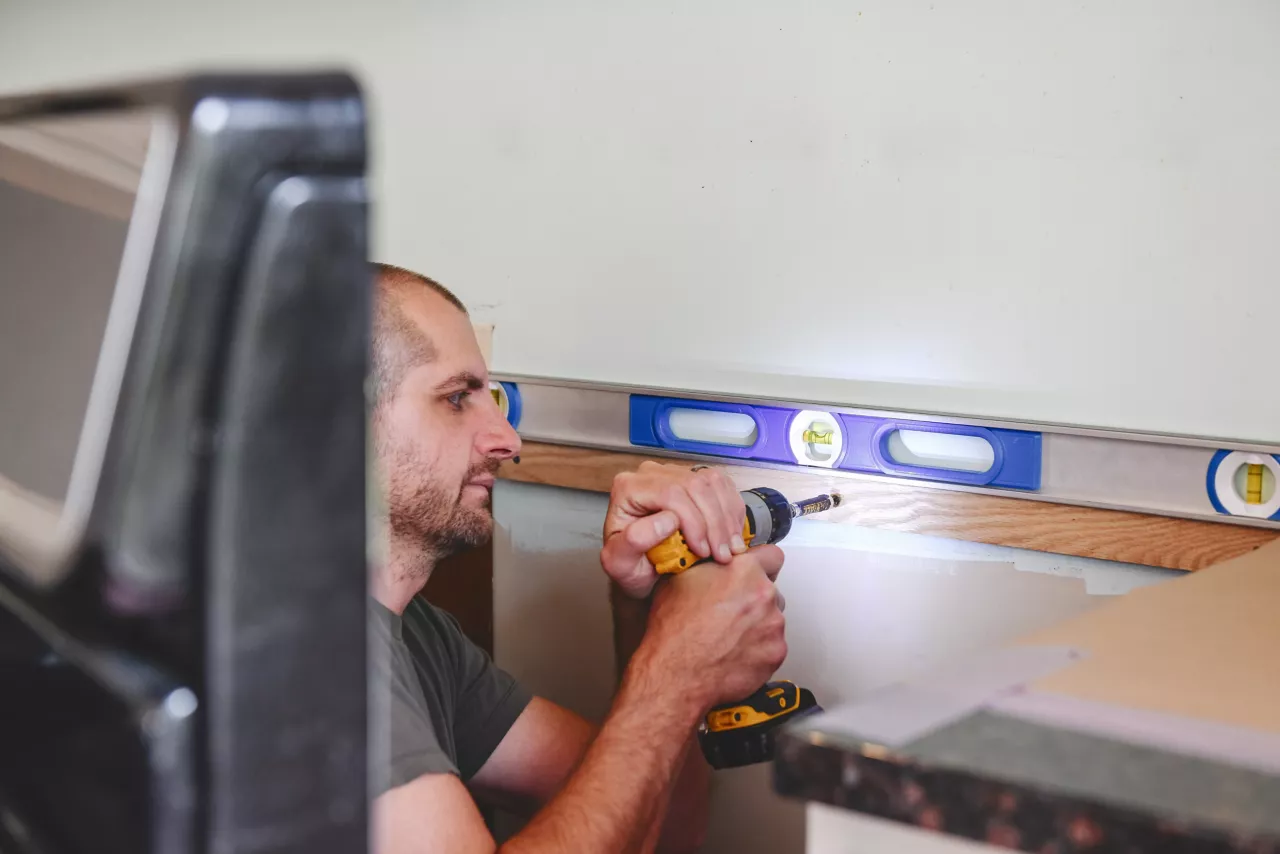
A ledger board is a thin, sturdy strip of wood that helps you achieve a precise and even tile installation where there is no counter, such as behind appliances. It will support the weight of the tiles as they cure and facilitate precise, even tile placement.
Using a level, mark a line on the wall where the bottom row of your tile backsplash will be. Then, using finishing nails, attach the ledger board to the wall using the line you marked to keep it level.
04
Plan the Design

Measure the area where you will be installing the backsplash. Using these dimensions, lay out the tile on a flat surface to test out the configuration. You can also use these measurements to determine the center of the area which will allow you to center the tile, creating a pleasing and even design. Don't forget to account for outlets and switches.
If tiles on one side need to be cut especially small, they may be difficult to work with and will not look as good. In this scenario, rearrange the tiles so that the cuts made to tiles on either side are symmetrical.
Many tile types, especially mosaics, do not have many options for playing with the layout. However, for those figuring out how to install a subway tile backsplash, this step will allow you to experiment with how the tiles are arranged. A staggered pattern is most popular, but a stacked look or even a herringbone design can be a fun change of pace.
05
Cut the Tiles
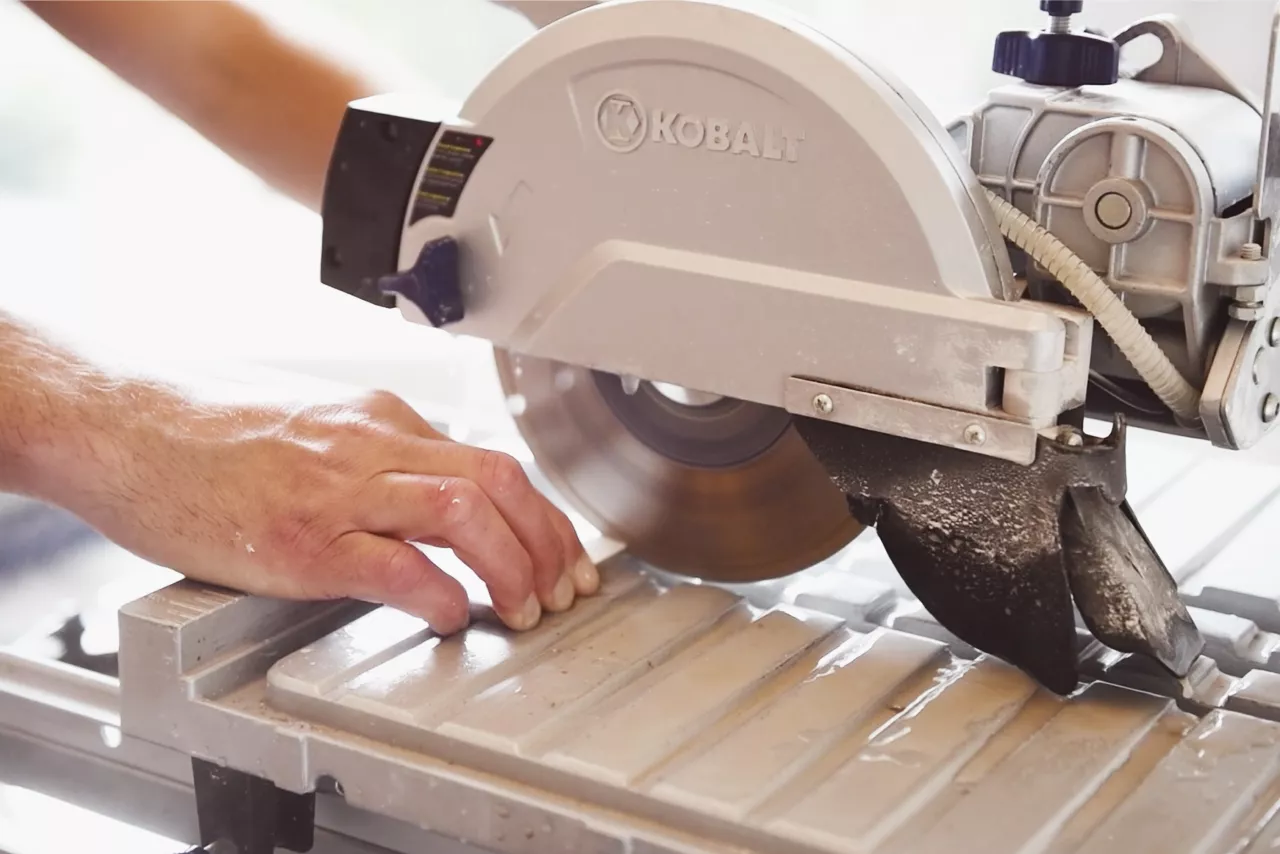
The tiles that meet the cabinets and the wall will need to be cut to size. To achieve a clean cut, it's important to use the right tool. You can use a snap cutter, a wet saw, or an angle grinder to cut your tile. Remember to measure and mark the tile carefully before cutting.
It is also very important to wear safety equipment, such as eye protection and a respirator, while cutting tile. This will protect you from errant tile shards and dust. It's also important for both your own safety and the quality of the cut that the cutting tools are in good condition.
For more detailed instructions, see our guide on How to Cut Tile.
06
Mix and Apply Adhesive

Follow the manufacturer's instructions for mixing the adhesive. This typically involves adding water to the powder in a clean bucket. Do not mix more adhesive than you will be able to use within approximately 20 minutes to prevent the adhesive from curing in the bucket.
To apply the adhesive to the wall, use a notched trowel to spread it evenly over a small area. Be sure to use a trowel with a notch size that is suited for the type of tile you are using. Hold the trowel at a 45 degree angle for even application.
07
Install the Tile
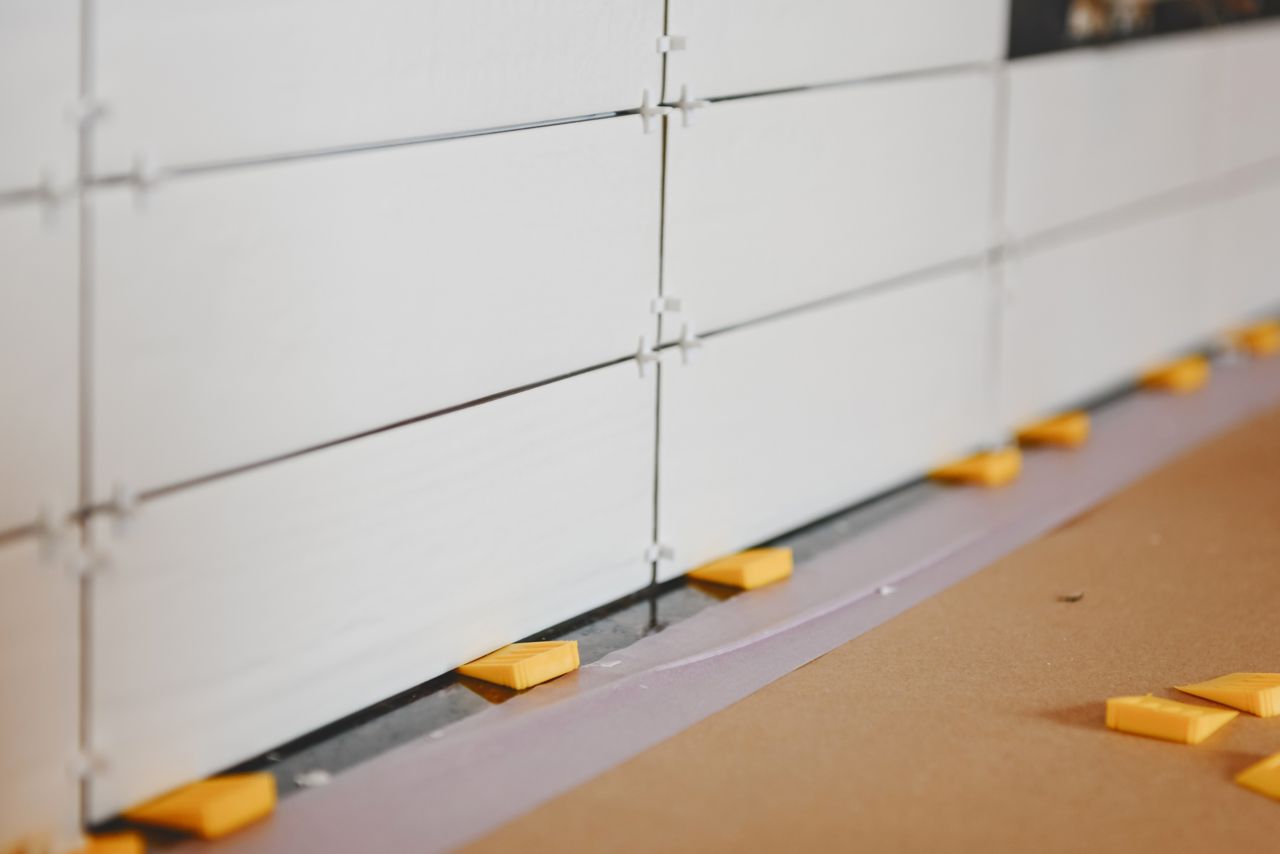
Carefully press the first tile into the adhesive, using a slight twisting motion to ensure even contact with the adhesive. Avoid sliding the tile too much, which can cause the adhesive to spread unevenly and affect the tile's final position. Be sure to leave a 1/8 expansion gap between the counter and the tile.
As you add more tiles, insert tile spacers at the corners of each tile to maintain consistent grout lines. The size of the spacers depends on the desired width of your grout lines and the type of tile being used.

Regularly check for alignment and level, both horizontally and vertically. Catching any mistakes early will help ensure you get the best results. Use a level or a straightedge to ensure that each row or column of tiles remains straight.
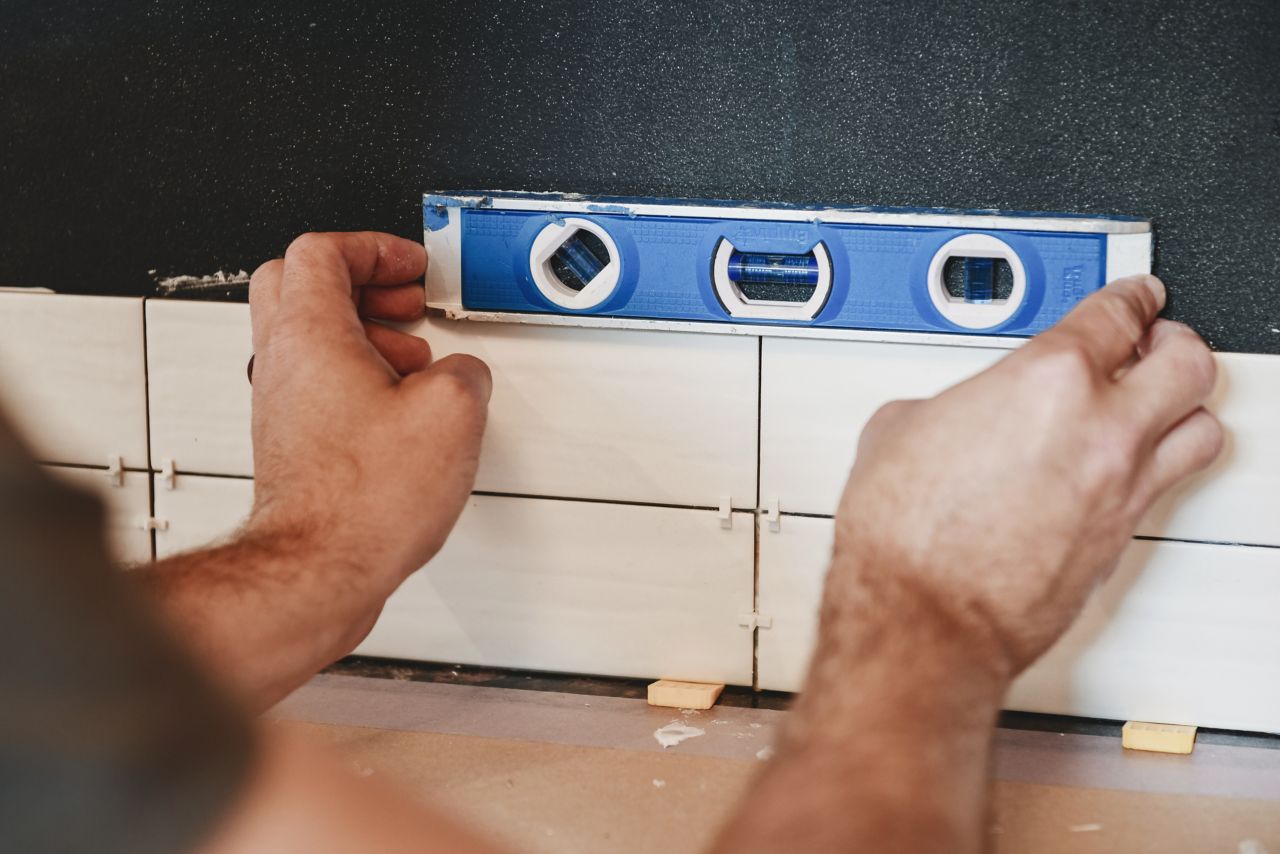
08
Mix and Apply the Grout
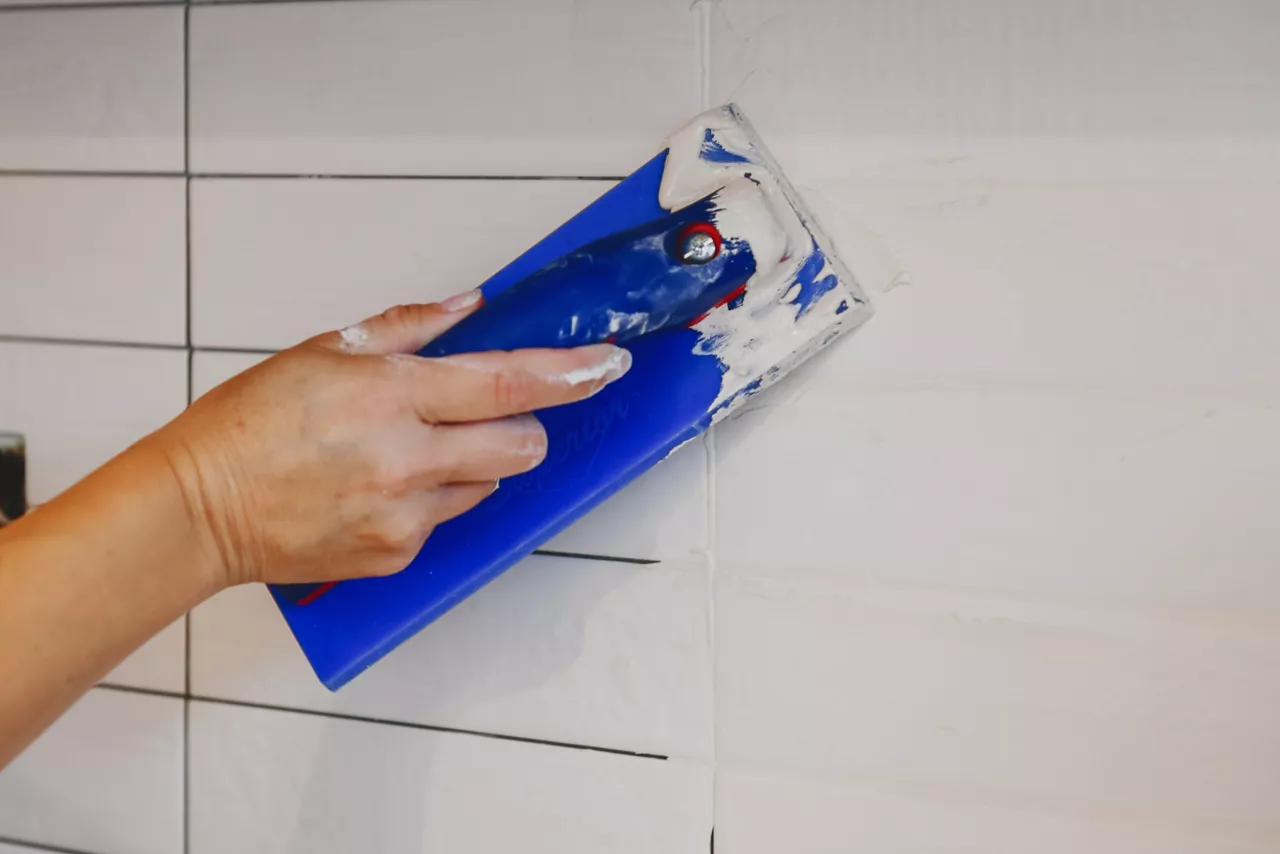
Clean the tiles so they are free from adhesive residue. Remove all spacers from between the tiles. Once the tiles are ready, mix the grout according to the manufacturer's instructions. As with the adhesive, mix the grout in small portions to prevent it drying prematurely.
To apply the grout, use a rubber grout float and scoop out a dab of grout. Apply this to the tile surface at a 45-degree angle to the grout lines. Press the grout firmly into the joints, making sure they are completely filled.
09
Clean and Seal Grout and Fill the Expansion Gap
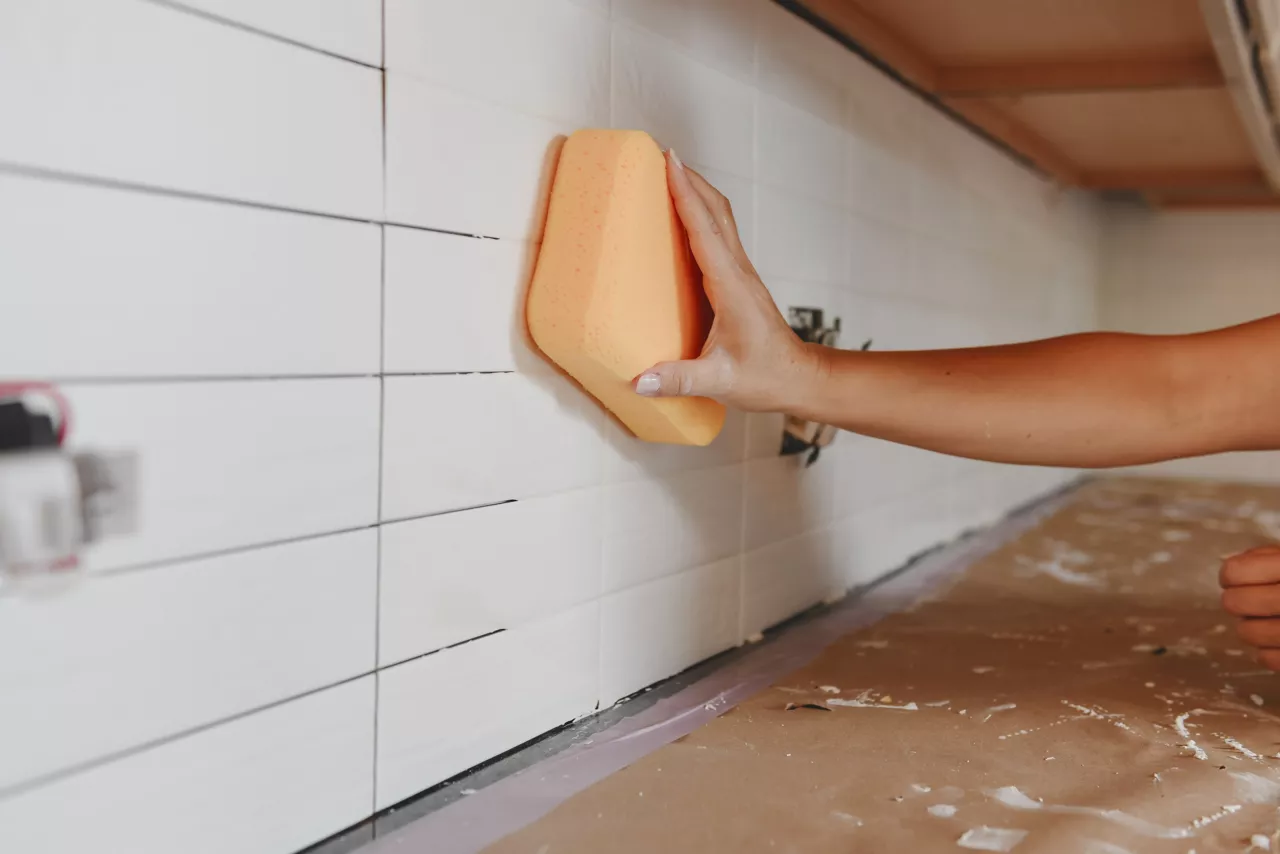
Before the grout dries, clean up the excess grout. Use a damp sponge (not dripping wet) to wipe diagonally across the tiles, removing the excess without digging into the joints. Rinse and re-wring your sponge frequently. After the grout has had more time to firm up (usually a few hours), polish away any remaining haze from the tile surface with a clean, dry cloth.
Next, fill the expansion gap with tile caulk. You can also add tile caulk to the corners where the tile meets the wall and where the tile meets the cabinets for a more finished look.
For added protection against stains and moisture, apply a grout sealer after 24-48 hours. Follow the sealer's instructions for application and drying time.
10
Clean and Reassemble the Area

Once the grout has cured and has been sealed, clean up any dust and debris left over from the project. At this point you can put appliances back and replace the outlet and switch plates.
This is also when you will remove the ledger board. Using a pry bar or hammer, gently pull the ledger board away from the wall. Take care not to mar the tiles or grout when you do this.
